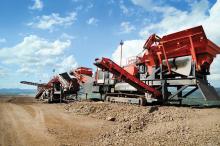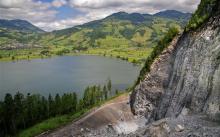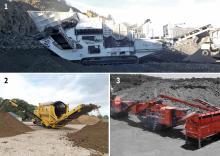
When it comes to producing large amounts of accurately sized aggregates, most large production quarries have chosen a stationary solution. For one Polish quarrying company, this was not a viable option. Instead, VWV turned to a multifaceted selection of Sandvik tracked mobile plant supplied by the Swedish manufacturer’s dealer in Poland, Grausch i Grausch Maszyny Budowlane.
Based near Wroclaw in the south-west of Poland, and with its registered office in Czarny Bór, VWV was established nine years ago and now employs approximately 100 people.
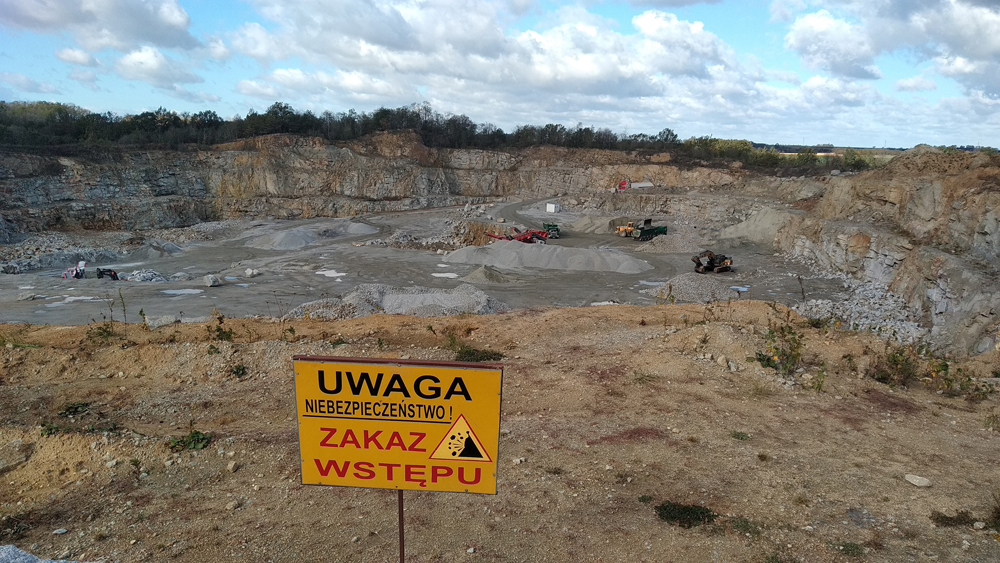
Dealing primarily with the extraction and production of a wide range of granite aggregates, the company has in a relatively short period become renowned for the high quality of its products and the professionalism of its service. The company now operates two of the leading granite quarries and mines in the south-west of Poland. From these operations, it supplies aggregates of the highest quality to construction and infrastructure companies throughout the country.
VWV’s quarrying, mining and production take place at the Strzegom quarry in Marcinowice, in the district of Swidnica, in Dolnoslaskie province, and at the Gebczyce quarry in the town of the same name, in the Strzelin district of Lower Silesia. The Strzegom quarry is located 30km from the A4-Bielany Wrocławskie motorway junction and the no.35 national road. The latter fact has proved to be vital in providing rapid distribution of aggregates to customers throughout the country and the local area. The national rail network is also easily accessed from the Sobótka Zachodnia station, further facilitating easy distribution throughout Poland. VWV also has its railway rolling stock fitted with a dedicated excavator for loading/unloading.
The Gebczyce quarry is located 8km south of Strzelin in Lower Silesia. Its location on the eastern periphery of the Lower Silesian Voivodeship also enables convenient, easy and cheap transport by both road and rail of any aggregate produced. Due to the location and the convenient locations of the road and rail infrastructure, both quarries are ideally placed to service the requirements of Polish construction and infrastructure industries, supplying aggregates throughout Poland and beyond.
The granite found in the Strzegom quarry is a magma rock, which has a fine- and medium-grained structure, with a light grey colour. The aggregates obtained from the granite deposits at the quarry possess excellent absorbability, compressive strength, abrasion and frost resistance, making them ideal for use in a wide variety of construction applications, including road, rail, general building works and hydro-technical engineering.
Similarly, aggregates from the Gebczyce quarry are also granite and possess a rarely found and unusual geological structure, providing notable technical and strength benefits. The rock itself is from the Strzelin Massif and is a deep magma, light grey with a fine-grained structure, which makes the aggregate have high compressive strength, low abrasiveness, and possess a high level of resistance to frost. The attributes of the rock make the aggregates produced useful in landscaping and decorative construction projects such as walls, ponds and rock gardens.
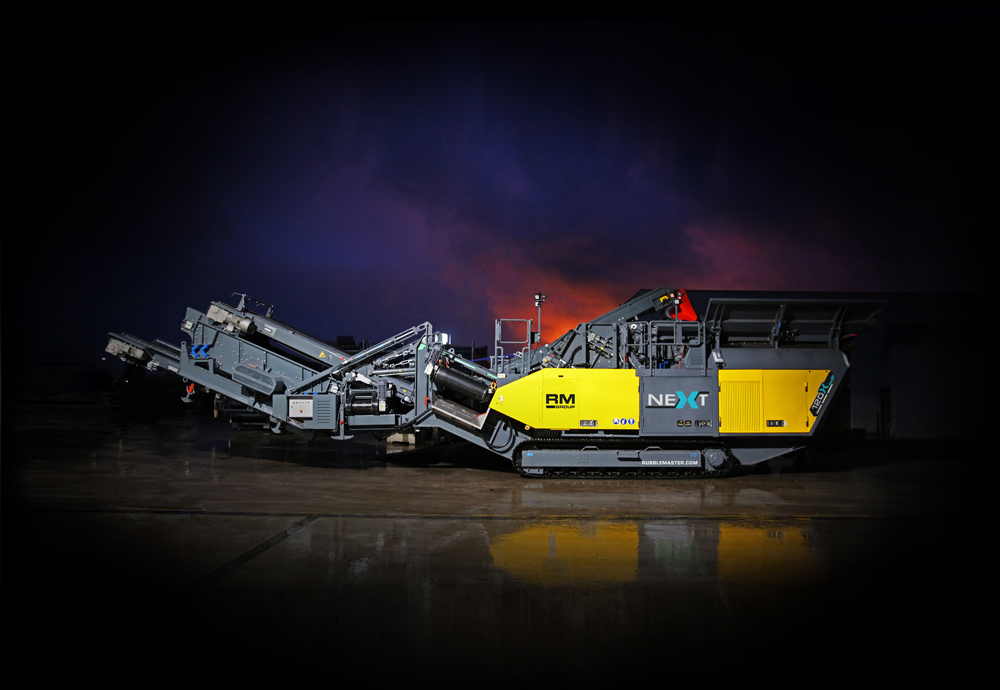
To be able to react to the ever-changing requirements of the construction industry, as well as to modernise its equipment fleet, VWV has continually updated the equipment it uses. Often working in conjunction with leading Polish equipment dealer, Grausch i Grausch Maszyny Budowlane, this has seen during the last four to five years a vital boost to the company’s production capabilities.
Through a significant investment project undertaken in both equipment and resources at both the Strzegom and Gebczyce quarries, VWV is now able to call upon a fleet of approximately 30 Volvo and Doosan excavators and loaders as well as over 50 Scania and Caterpillar haul trucks. In addition to this fleet of tracked and wheeled machines, the company also has its dedicated railway trucks for the direct and convenient transport of aggregates to national railway infrastructure. However, before they can be transported, aggregates need to be produced.
When upgrading its crushing and screening capabilities, VWV management opted for a Sandvik tracked mobile plant supplied by Grausch i Grausch Maszyny Budowlane. The plant was chosen due to its ability to offer more flexible production of aggregates, while also maximising the quarry’s resources by being able to go directly to the rock. The Sandvik solution also met key VWV requirements of a crushing train offering primary and secondary crushing capabilities and screening and scalping units that are accurate enough to produce sized aggregates that can be shipped to customers direct from the quarry, without the need for further processing.
The sellable aggregates produced by VWV are 0-4mm, 4mm - 31.5mm, 31.5mm -50mm, +50mm and a 100mm – 500mm. To ensure these product fractions, two Sandvik crushing and screening train now operate consisting of a QJ341 primary jaw crusher, a QH331 Hydrocone crusher and a QA451 triple-deck Doublescreen. The latter model can produce four accurately sized products working perfectly with the high productivity of the jaw and cone crushers. The second train consists of another QJ341 tracked jaw crusher and a QE341 scalper/screen, which is the ideal combination for maximising the resources found at the quarry.
Michał Dworzynski, of Grausch i Grausch Maszyny Budowlane, said: “The new Sandvik equipment enables the quarry to meet the needs of current and future customers. The acquisition is part of the company’s mantra of continuous improvement in its granite production through investing in the latest and most productive processing technology. The equipment is used by well-trained staff (training was undertaken by Grausch i Grausch and Sandvik), enabling it to react quickly to ever-changing market requirements without any compromise in quality.”
As to why VWV chose Sandvik, Dworzynski is equally forthcoming: “We offer a professional service, attaching great importance to proper planning encompassing what our customers want to achieve, and how best to meet these requirements. Grausch has a hard-won name for excellence in Poland, and the Sandvik mobile crushing and screening equipment is seen as the very best equipment of its kind available on the market.”
With its new equipment in place, VWV is able to supply over 500,000 tons of aggregates each year to a variety of customers. Although road and rail construction are the mainstays of the quarry’s business, a new customer has been taking a sizeable proportion of the aggregates from both quarries. Poland’s largest river, the Vistula, is the scene of a new dam which is also set to be the home of an 80 MW hydroelectric power plant. The project will cost more than €470mn, according to Poland’s environment ministry, and is located near the village of Siarzewo. With a project of this size as well as satisfying the requirements of its existing customers, the plant upgrade could not have happened at a better time for VWV.
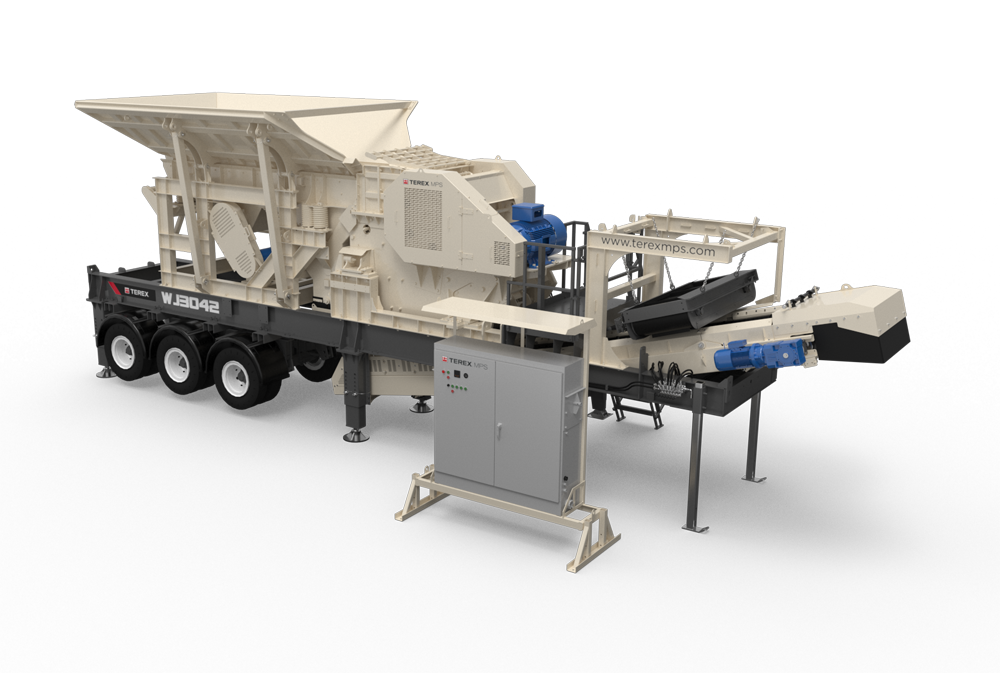
Rubble Master says its new RM 120X crusher is the first machine showcasing its new RM NEXT product philosophy to go into full production.
The debut RM NEXT crusher follows on from a prototype RM NEXT machine showcased at bauma in Munich, Germany in April 2019. The RM NEXT-based RM 120X crusher will be followed by an RM NEXT-based screen in 2021.
“With this philosophy, we are once again setting standards in user-friendliness,” says Gerald Hanisch, founder and owner of Rubble Master, enthusiastically. As the first NEXT philosophy crusher, the RM 120X combines enhanced safety with maximum performance and flexibility. However, the company remains true to its proven service and intuitive GO! operation concept, which it continues to expand.
In a nutshell, RM NEXT focusses on four points. Extended service is one of them, which includes both the standard five-year warranty - an industry first - and the annual service.
Simplicity is ensured despite the additional features, equipment options and configurations that have been developed based on customer requirements. “Operating a RM 120X still involves only a few buttons. The built-in screen is only used to display information and has no sub-menus. We have received valuable input for this operating concept from our customers around the world, and the controls and display meet the specifications on job sites 100%,” says Hanisch.
The RM Group has always been one of the pioneers in terms of safety. Gerald Hanisch’s vision has now become a reality. With RM NEXT and the comprehensive operator-machine interface, the operator no longer has to enter the danger zone while operating the machine and can see light signals indicating both the status and current workload of the crusher from the excavator cab.
An additional focus was on the optimisation of material throughput. Here, the world market leader implements job-specific crushing equipment for the respective material and real-time analysis. This reduces running costs and increases turnover. The optimisation starts with the machine configuration, which is why five main application cases have been developed with the necessary equipment options. Also, the performance indicator on the machine and the RM GO! SMART can be used to detect and implement any potential improvement immediately.
“When we started developing RM NEXT, we always had our entire product range in mind. In future, an important role will be played by networking different products in operation at the same job site. However, we can only make this happen if all the products work according to the same philosophy,” explains Hanisch. That is why intensive work is currently underway to network RM machines that work together. This will mean that the throughput of the screen can be adjusted in future to match the utilisation of the crusher. Machines downstream from the crusher can also stop automatically if the crusher is currently not processing any material. These optimisations are designed to increase efficiency and save running costs.
The new Terex Minerals Processing Systems’ (Terex MPS) high-capacity, all-electric wheeled crushing systems are said to be designed to deliver and built to last. Quick to set up and dismantle, and easy to operate, the new wheeled crushers’ claimed exceptional portability, productivity, efficiency and quality deliver real advantages over other systems in labour savings, power, maintenance, plant relocation costs and time.
The Terex WJ3042 is a high-performance wheeled jaw crusher plant. Incorporating the aggressive Terex JW42 jaw crusher and a heavy-duty vibrating grizzly feeder, the Terex WJ3042 gives optimum production in a range of applications. Plant installation is assisted with hydraulic legs. Its compact size, quick set-up times, ease of transport and simple maintenance make the Terex WJ3042 ideal for quarrying, mining, demolition and recycling applications.
The Terex WC1150S Cone-Screen plant is a high-performance, medium-sized wheeled crushing-screening system. At the heart of the plant is the 225kW Terex TC1150 cone crusher with a modern automated control system. Its innovative crushing action is said to provide excellent capacity, high reduction and good product cubicity for the production of high-quality aggregate and sub-base materials. A level sensor over the cone crusher regulates the feed to ensure the cone chamber is choke fed, essential for maximum production, manganese life and optimal product shape. The large onboard 6’x20’ three-deck screen allows for sizing product from a single plant. Plants come with hydraulics for simple and easy installation of the plant.
The WJ3042 and WC1150S are available as standalone plant or as part of a multi-plant system with product conveyors for a complete crushing and screening solution. All plant and conveyors are made to fit in standard containers for easy transport overseas or on the road; the entire system with conveyors can be transported in nine containers. Once on-site, each assembled plant can be transported in a one-piece tow. Hydraulic screen lift and hydraulic support legs reduce cranage and tools required for plant set up and relocation.
Aggregate material in France’s north-western corner is often shipped to the mainland from nearby tiny Ushant Island in the English Channel - La Manche, in French.
But one enterprising company, Jean-Jacques Perhirin, in Kéranchas, recently bought two MB Crusher’s units - a BF70.2 crushing bucket and an MB-S14 screening bucket - and began recycling debris.
The two powerful units now work close to another powerful unit, the 53m-high Phare du Créac’h. Built in 1863, it is one of Europe’s most powerful lighthouses. A short distance away the MB Crusher BF70.2 is mounted on a Hitachi 170W to reduce brick and concrete. With the MB units operating apace, the company says that it is saving natural resources as well as avoiding the cost of bringing in aggregate by sea.
Also, the compact MB Crusher attachments make it possible to work in restricted spaces. They are now able to make their own aggregates, by sifting rubble to separate the smallest portion and then reducing the larger pieces with the jaw crusher. Et voilà! Aggregate for paving, foundation and fillings.


